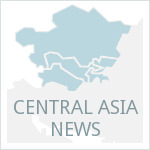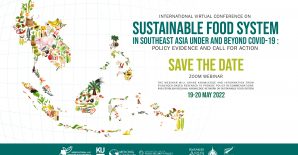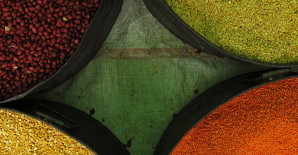News
Kazakhstan: precision agriculture technology, digitization introduced to boost productivity
This year, Kazakhstan’s Ministry of Agriculture will focus on introducing precision technology, intensive irrigation, livestock development, and renewing agricultural machinery. These four priority areas are intended to increase agricultural labor productivity. In addition, the ministry plans to streamline agricultural research and improve sanitary and phytosanitary procedures. – Astana Times
Russia's foreign trade with CIS countries up
Russia’s foreign trade turnover with Uzbekistan, Kyrgyzstan, and Kazakhstan increased by more than 30 percent each in 2017, according to data from the national customs service. Kazakhstan is Russia’s second largest CIS trading partner behind Belarus. Trade with Turkmenistan, the only Central Asian country not part of the CIS, fell sharply by 52.5 percent. – AzerNews
Migrants transfer nearly $2.5 billion to Kyrgyzstan in 2017
The National Bank of Kyrgyzstan reported that labor migrants transferred $2.48 billion to Kyrgyzstan in 2017. Of this amount, Kyrgyz migrants based in Russia contributed $2.44 billion. – News Agency 24
Andijan-Osh-Irkeshtam-Kashgar transport corridor to start operating on February 25
A road transport corridor linking Tashkent with Kashgar (China) will open on February 25. The 920-kilometer route is forecast to cut delivery times between Uzbekistan and China from 8-10 days to 2 days. During a test run, a convoy of trucks took 31 hours to traverse the route, 3.5 hours of which were spent at customs points. – Tashkent Times
Analysis & Other Information
Kyrgyzstan set to build exports of agricultural production
Kyrgyz agricultural producers are looking to take advantage of opportunities opened by the Eurasian Economic Union (EAEU). Exports of processed foods and agricultural products to EAEU countries increased dramatically between 2016 and 2017 despite limitations in terms of quality control and packaging. – Kazakh TV
Tajikistan plans to begin supplying surplus electricity to Uzbekistan
Tajikistan is prepared to deliver up to 1.5 billion kilowatt-hours of energy to Uzbekistan, according to a government official quoted in this article. The presidents of the two countries are expected to discuss this issue (among others) at a summit in March. Speculation about the potential revival of the Soviet-era Central Asian power grid has been gaining steam in recent months. The regional power grid disintegrated in 2009 following a harsh winter in which Tajikistan reportedly overdrew its energy allotment. Tajikistan has since developed its own generating capacity to meet its annual needs. – Asia-Plus
Slippers with a soul: Kyrgies blend wool tradition with living-wage jobs for women
A Virginia-based entrepreneur is marketing Kyrgyz wool slippers retailing between $49 and $59 online and in select locations in Canada. Branded “Kyrgies,” the slippers are handmade by a women-run arts collective in Bishkek. One of the founders of Kyrgies gave Kyrgyz wool high marks, though he suggested that wool-cleaning and related industrial infrastructure require additional investment. – WTOP
Publications & Reports
Crowding-out (or -in) effect in transition economies: Kyrgyzstan case
N. Atabaev, J. Ganiev, N. Alymkulova (2018). International Journal of Development Issues. Accepted article.
Land reform by default: uncovering patterns of agricultural decollectivization in Tajikistan
B. Hierman, N. Nekbakhtshoev (2018). Journal of Peasant Studies, 45(2), pp. 409-430.
Climate vulnerability and adaptive capacity of mountain societies in Central Asia
S. Manandhar, S. Xenarios, D. Schmidt-Vogt, C. Hergarten, M. Foggin (2017). Mountain Societies Research Institute, University of Central Asia. Research report series.
Archived issues of the news digest can be found on the Central Asia page under the ReSAKSS Asia website: http://resakss-asia.org/regions/central-asia. A link to the newsletter can be found under Blog Posts.
The articles included in this news digest have been generated from online sources. Any opinions stated herein are not representative of, or endorsed by, the International Food Policy Research Institute or its partners.



